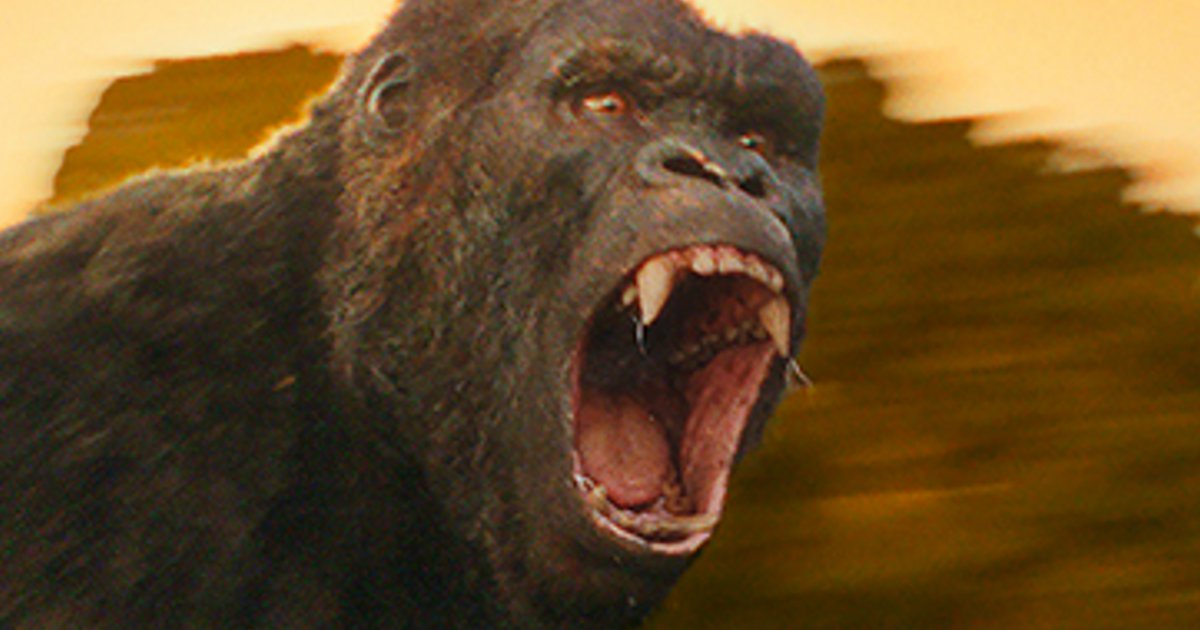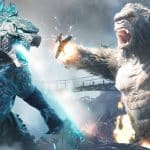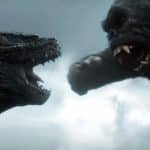Check out a first look at King Kong in Skull Island.
The image comes via Entertainment Weekly with comments from director Jordan Vogt-Roberts:
We sort of went back to the 1933 version in the sense that he’s a bipedal creature that walks in an upright position, as opposed to the anthropomorphic, anatomically correct silverback gorilla that walks on all fours. Our Kong was intended to say, like, this isn’t just a big gorilla or a big monkey. This is something that is its own species. It has its own set of rules, so we can do what we want and we really wanted to pay homage to what came before…and yet do something completely different.
Kong’s always been a little bit tragic. You can’t tell exactly from the still, but the way that he walks on the island, the way that he goes from place to place, I wanted to communicate something about his headspace and about the way that, in certain ways, he’s the protector of this island and then in other ways he’s killing time. The way he lumbers, the way that he drags himself from place to place, there’s an exhaustion to him. There’s obviously a huge power to him, but there’s a sadness contained within his animation. The way that he walks and his facial capture fused with this very energetic, young Kong at the same time.
That [image still] comes from a point in the movie where you’re not quite sure who Kong is, what his purpose is, how people should be perceiving him. Through the folly of man, where our initial instinct is to attack anything that is not a known quantity, both sides jump the gun, Kong and the humans, and it kicks off a relatively messy engagement. At first, of course you’re going to perceive something like that as a terrible threat and monster — the physicality of him alone.
We’re also fundamentally not playing the same game that Gareth Edwards’ Godzilla did and most monster movies do, which I’m sort of sick of the notion that a monster movie needs to wait an hour or 40 minutes until the creature shows up. Kong traditionally does not show up in these movies until very, very late, and the monster traditionally does not show up until very, very late in a monster movie, so a lot of these movies tend to have this structure that’s a bit of a slow burn. Something about this movie made me want to reject that and play a very, very different game.
From a design perspective…you go in one direction and end up with the Hulk and you go in another direction and you end up with Planet of the Apes, and then Peter obviously did such a good job with his version, so you’re left with a very narrow target of how you create something that pays homage to what came before it. With the 1933 film, which was important to me because I love that design, I love the fact that he feels like a movie monster and not just a big gorilla. So how do you make something that feels real, yet also is a throwback to movie monsters, and then takes on that very larger-than-life, God-like quality, and then be able to pull back the layers from it and peel the onion to throughout the film find out more and more and more about him and his backstory, and hopefully kind of lock you into his emotional state and invest you with him?
Kong: Skull Island has a March 10, 2017 release directed by Jordan Vogt-Roberts starring Tom Hiddleston, Brie Larson, Samuel L. Jackson, John Goodman, John C. Reilly, Tian Jing, Corey Hawkins, Jason Mitchell, John Ortiz, Thomas Mann, Shea Whigham, Toby Kebbell and Eugene Cordero.
Synopsis:
In the film, a diverse team of explorers is brought together to venture deep into an uncharted island in the Pacific – as beautiful as it is treacherous – unaware that they’re crossing into the domain of the mythic Kong.







